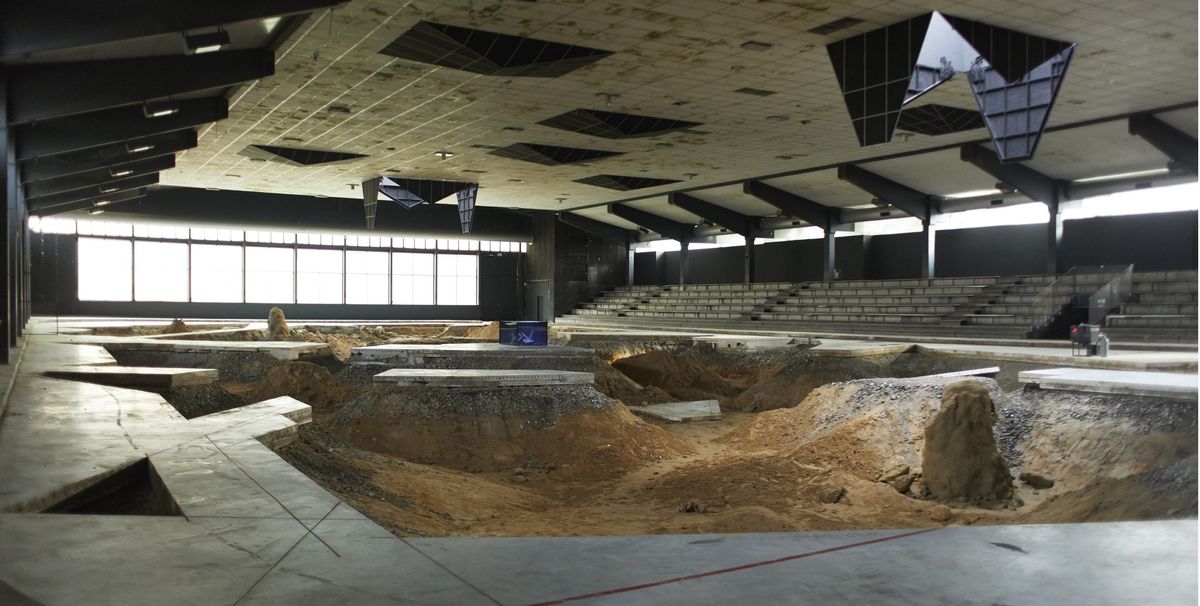The sensation of this year’s Sculpture Projects Münster, which opened on Saturday (until 1 October), is Pierre Huyghe’s futuristic “biotope” in a disused ice-rink. Featuring live animals, an incubator growing cancer cells and augmented reality, it is among the most ambitious works ever realised at the decennial show in the north-west German city.
As well as the €35,000 given to each Münster participant, Huyghe has had help from his galleries: New York’s Marian Goodman, Hauser & Wirth in London, Esther Schipper in Berlin and Paris’s Chantal Crousel. Kasper König, the show’s chief curator, says the project “might cost more than €1m, so this is a total exception”.
Titled After ALife Ahead (2017), the installation resembles a sci-fi landscape: Huyghe has sliced into the concrete floor and excavated the earth beneath, as well as automating pyramid shapes on the ceiling. Chimera peacocks (a genetic mutation) and bees move within the landscape while an aquarium contains a conus textile, a venomous sea snail species.
“The building is a haunted living organism, an enclosed place, porous to the outside,” Huyghe says. He envisions the space as “an old biodome”, where “the ceiling structures open and close, changing the conditions and changing the configuration of what is occurring within that organism”. The space offers the possibility “to navigate through in a certain way”, he says, and is “large enough to host a set of things, different entangled systems”. The sci-fi aspect was, he says, inherent in the ceiling architecture, which resembles a “computer grid that we used to see in the 1980s. It caught my attention and was a way to start thinking about this work: a promise of a digital horizon, now an old futuristic vision.”
Each of the installation’s elements affects the others: Huyghe scanned the conus textile’s pattern, so that it can be “read as a score that makes the aquarium change from transparent to opaque. When opaque, the ceiling structure is closed. When transparent, the structure opens, leaving the rain or the sun to enter the building and changing the conditions within the biotope.”
Cables and sensors under the soil “capture variations in the vitality of the place, whether it’s the bacteria, bees, CO2, temperature”, he says. This information feeds an incubator containing the cancer cells; they divide faster or slower depending on these external factors. When they reach a certain threshold “it manifests an augmented reality shape identical to the ones on the ceiling pattern, a metastasis of that pattern”, Huyghe says, which visitors can experience through a downloadable app. Through your smartphone’s camera, you then see shapes moving around the site. “[The cells] have a different ability to survive,” he says. “When they reach a certain fitness, they affect the pattern of the tank appearance and the ceiling opening.”
König compares the project to great 20th-century land art. “It is very much like a Walter de Maria or [Robert] Smithson, even though it is not going to remain,” he says. Unlike many of those works, though, Huyghe chose to emphasise artificiality rather than nature. “The artificial became evident as I chose the ice rink, rather than doing something outside with already existing natural elements,” he says. “I pushed this artificiality further.”


